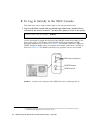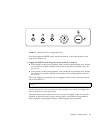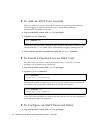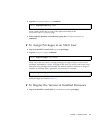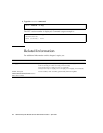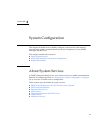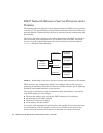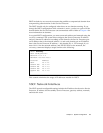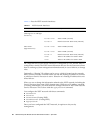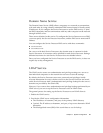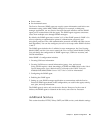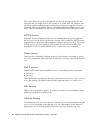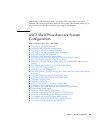
20 SPARC Enterprise Mx000 Servers Administration Guide • April 2007
TABLE 3-1 lists the XSCF network interfaces.
On a high-end server, one Service Processor is configured as active and the other is
configured as standby. The XSCF network between the two Service Processors allows
them to exchange system management information and, in case of failover, to change
roles.
Optionally, a “floating” IP address can be set up, which is hosted on the currently
active Service Processor. External clients can use this floating IP address to connect
to whichever Service Processor is active. Selection of a floating IP address does not
affect failover.
When you set or change the information related to the XSCF network, including the
Service Processor host name, DNS domain name, DNS server, IP address, netmask,
or routing information, you must make the changes effective in XSCF and reset the
Service Processor. This is done with the applynetwork command.
You configure the XSCF network with these commands:
■ setnetwork
■ setroute
■ sethostname (if using DNS)
■ setnameserver (if using DNS)
■ applynetwork
Once you have configured the XSCF network, it requires no day-to-day
management.
TABLE 3-1 XSCF Network Interfaces
XSCF Unit Interface Name Description
XSCF Unit 0
(midrange server and high-
end server)
xscf#0-lan#0 XSCF LAN#0 (external)
xscf#0-lan#1 XSCF LAN#1 (external)
xscf#0-if Interface between XSCF Units (internal)
XSCF Unit 1
(high-end server)
xscf#1-lan#0 XSCF LAN#0 (external)
xscf#1-lan#1 XSCF LAN#1 (external)
xscf#1-if Interface between XSCF Units (internal)
lan#0 Takeover IP address for XSCF LAN#0
lan#1 Takeover IP address for XSCF LAN#1



